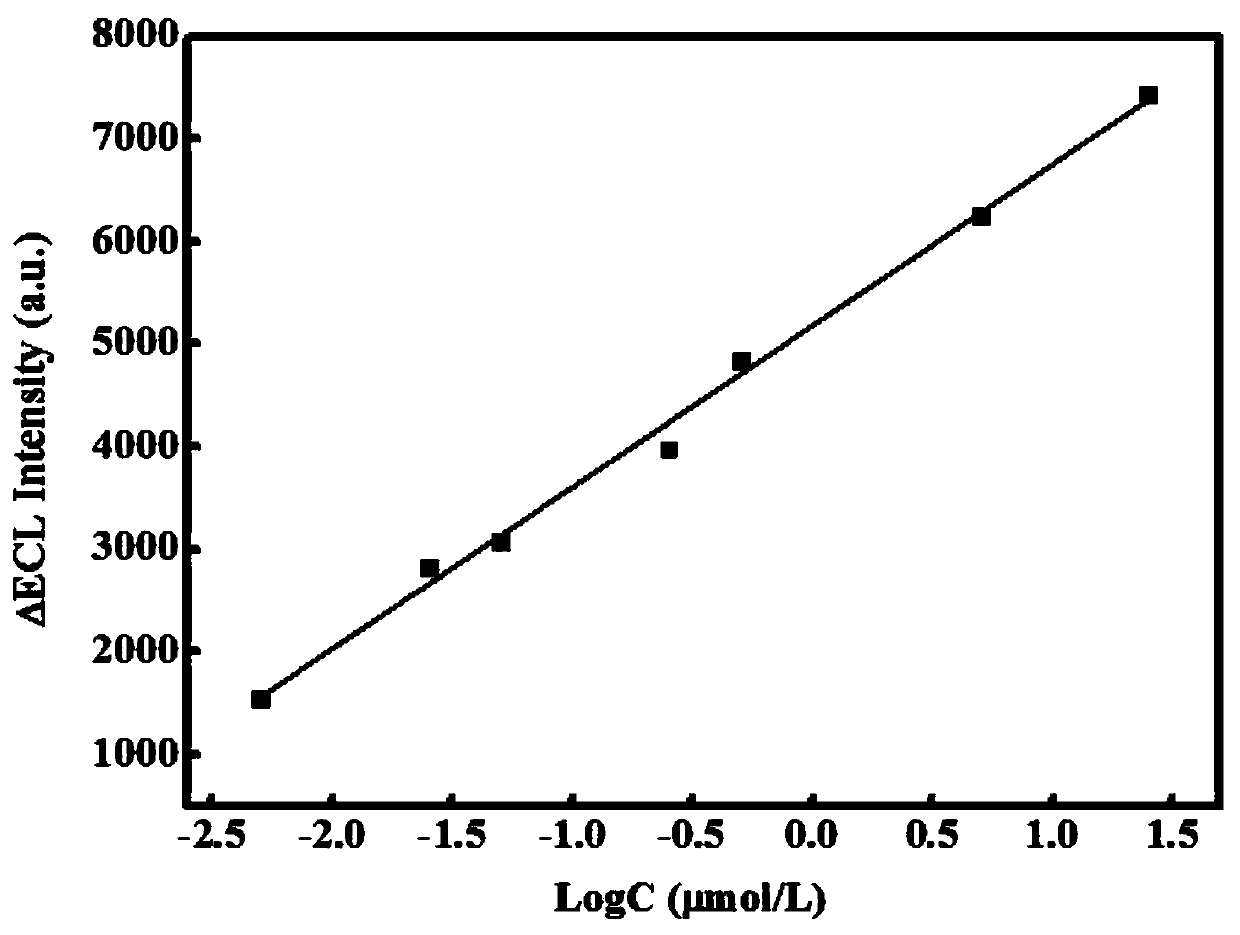Electrochemiluminescence method for detecting catechol
A catechol and electrochemical technology, applied in the field of electrochemiluminescence, can solve the problems of being unsuitable for rapid detection of catechol in tea, time-consuming and labor-intensive detection, etc., and achieve the effect of experimental reagents being environmentally friendly, easy to operate, and high luminous intensity
- Summary
- Abstract
- Description
- Claims
- Application Information
AI Technical Summary
Problems solved by technology
Method used
Image
Examples
Embodiment
[0026] (1) Preparation of CDs@HKUST-1 / GC modified electrode
[0027] Dissolve citric acid (1.0512 g) and ethylenediamine (340 μL) in a beaker filled with distilled water (10 mL), and stir for 10 min to form a transparent solution, which is then transferred to a polytetrafluoroethylene autoclave (50 mL) at 200 °C Next, react for 5h. After the reaction, cool to room temperature, transfer the liquid in the kettle to a dialysis membrane (1000 MWCO), dialyze in ultrapure water for 24 hours, centrifuge the liquid in the dialysis bag (3500rpm20min), take the supernatant, and freeze-dry it. Obtain dry carbon dot powder.
[0028] Weigh copper nitrate trihydrate (0.4202g), dissolve in distilled water (12mL), weigh 1,3,5-tribenzenetricarboxylic acid (0.2105g) and dissolve in absolute ethanol (12mL), then mix the two, The mixed solution was obtained and stirred by magnetic force for 30 min to form a uniformly mixed HKUST-1 precursor solution.
[0029] Add the prepared carbon dot powder...
PUM
 Login to View More
Login to View More Abstract
Description
Claims
Application Information
 Login to View More
Login to View More - R&D
- Intellectual Property
- Life Sciences
- Materials
- Tech Scout
- Unparalleled Data Quality
- Higher Quality Content
- 60% Fewer Hallucinations
Browse by: Latest US Patents, China's latest patents, Technical Efficacy Thesaurus, Application Domain, Technology Topic, Popular Technical Reports.
© 2025 PatSnap. All rights reserved.Legal|Privacy policy|Modern Slavery Act Transparency Statement|Sitemap|About US| Contact US: help@patsnap.com



